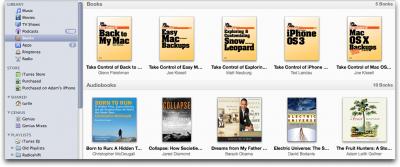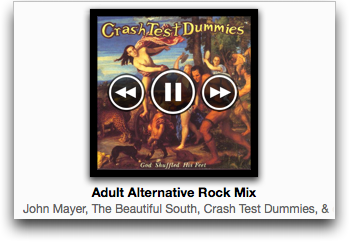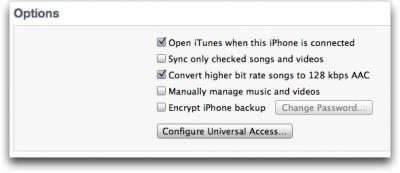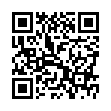Find Text Leading from Acrobat PDF
Ever have to recreate a document from an Acrobat PDF? You can find out most everything about the text by using the Object Inspector, except the leading. Well, here's a cheesy way to figure it out. Open the PDF in Illustrator (you just need one page). Release any and all clipping masks. Draw a guide at the baseline of the first line of text, and one on the line below. Now, Option-drag the first line to make a copy, and position it exactly next to the original first line at baseline. Then put a return anywhere in the copied line. Now adjust leading of the copied lines, so that the second line of copy rests on the baseline of the second line of the original. Now you know your leading.
Or you could buy expensive software to find the leading. Your choice.
Submitted by
Greg Ledger
Recent TidBITS Talk Discussions
- Alternatives to MobileMe for syncing calendars between iPad/Mac (1 message)
- Free anti-virus for the Mac (20 messages)
- iTunes 10 syncing iPod Touch 4.1 (2 messages)
- Thoughts about Ping (16 messages)
Published in TidBITS 1022.
Subscribe to our weekly email edition.
- Apple to Unveil iPhone OS 4 on April 8th
- Why the iPad Is a Blank Slate, and Why That's Important
- The iPad: A Developer's Anti-Contrarian View
- How to Choose Your Ideal iPad and Accessories
- Bonus Stories for 5 April 2010
- TidBITS Watchlist: Notable Software Updates for 5 April 2010
- ExtraBITS for 5 April 2010
iTunes 9.1 Brings iPad Compatibility and More
As is commonplace whenever Apple releases a new iPod or iPhone OS device, the company has updated iTunes to support the new device, adding a bunch of small improvements at the same time.
Most important, iTunes 9.1 includes the capability to sync music, movies, and television shows to the iPad. Most of that is under the hood, of course, but iTunes 9.1 also changes the Advanced > Create Apple TV Version menu item to Create iPad or Apple TV Version; presumably it creates a version of a selected video file that's compatible with both the Apple TV and the iPad. Frankly, I'm wildly unimpressed with this interface; Apple should figure out how to do these conversions behind the scenes without bothering the user, as with the capability to convert song bit rates and photos. I realize the computation is far more intensive on the video side, but that's still a weak excuse for a bad interface.
iTunes 9.1 also adds the capability to organize and sync books that you've downloaded from the iBookstore through iBooks on your iPad, or that you've added directly to your iTunes library. The top-level Audiobooks item under Library in the sidebar has been renamed to just Books and now stores both audiobooks and EPUB books. (Although you can drag PDFs into iTunes, they won't appear in Books even if you set the genre metadata appropriately.) In the screenshot, I've imported EPUB versions of some of our Take Control books, and although they sync to an iPad, they can't be read in iTunes. (On disk, they're sorted into the Music folder by author, rather than appearing in a Books folder the way Movies, Podcasts, and TV Shows do.) A new Books tab that appears when you connect a device enables you to select which books will sync, though EPUB books currently don't sync to an iPhone or iPod touch.
The last change that Apple mentions is the capability to rename, rearrange, and remove Genius Mixes - an organizational godsend for those who like Genius Mixes but find them overly rigid. You can't restore a single deleted Genius Mix, but you can Control-click or right-click in the Genius Mix view and choose Restore All Genius Mixes to bring back those that you've deleted. Plus, next and previous track icons appear on the Genius Mix icon while it's playing, though there's still no way to see what songs it contains.
But Apple failed to call out additional welcome changes. Most notable among these is iTunes 9.1's capability to convert higher bit-rate songs down to 128 Kbps AAC for syncing with an iPod, iPhone, or iPad. This feature will be most welcome for those who prefer to rip songs at high bit rates that consume more space than would be ideal on these space-constrained devices. Look for the "Convert higher bit rate songs to 128 Kbps AAC" checkbox in the Summary tab when your device is connected.
Other small changes - many of them in interface wording - abound. Chris Breen at Macworld has identified a number of them, including the addition of a Reset iTunes Store Cache option in the Advanced tab of the iTunes Preferences window. See his article for a full list.
Finally, while nearly all of iTunes 9.1's security content applies only to the Windows version, one fix does apply to Mac OS X, and resolves a seriously pesky bug: playing a maliciously crafted MP4 podcast could result in trapping iTunes in an infinite play-loop that persists even upon restarting the program.
iTunes 9.1 is a 93.6 MB download and is available for free via Software Update or the Apple Support Downloads page. It requires Mac OS X 10.4.11 or later.
 WebCrossing Neighbors Creates Private Social Networks
WebCrossing Neighbors Creates Private Social NetworksCreate a complete social network with your company or group's
own look. Scalable, extensible and extremely customizable.
Take a guided tour today <http://www.webcrossing.com/tour>
I hope this means as I add monthly photo galleries to a folder, they will automatically be synched to all subscribing devices, rather than having to connect each device and manually check the album.
For the 90+ MB size iTunes is getting to now, I'd hope for more user-choice customizability.
I think I will post this request to the Apple iTunes Feedback site.
Maintainer, I encourage you to do also :) - maybe Apple will hear us.
Video is still relatively storage and processor intensive. Music and pictures are not. So while I agree there's some hassle involved, the limits of space and time actually seem like pretty good excuses to me.




